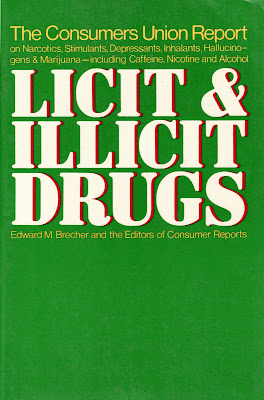
quite an interesting volume from the publishers of Consumer Reports magazine. contains some fascinating and convincing research on "heroin overdose" as an catch all determination used by lazy coroners whenever an addict is brought to the morgue.
the authors point out that actually overdosing on heroin is quite difficult, if not impossible. (did not know that) their research shows that it would take more than 50 times times a standard dose (more than 500 mg) to kill even a non-addict. in one experiment an addict was injected with 1800 mg of unadulterated heroin over the course of two hours. this did not even make him drowsy, let alone sick or dead. even if addicts did inject insanely large amounts, death would come slowly, leaving plenty of time for many of them to be saved by injection of a narcotic antagonist.
why so many addicts are dropping dead from "overdose" seemed a medical mystery to the researchers... they point to a spike in "overdose" deaths in new york beginning in 1943, many of the addicts found with the syringe still in the vein. given that lethal opiate doses cause a slow death, something else must be killing these drug users.
one hypothesis points to a 1939 malaria epidemic in new york, after which quinine was increasingly used as an adulterant by dealers. an unrelated investigation of the deaths of several nurses attempting to induce abortion on themselves by ingesting quinine brought rapid death by pulmonary edema almost identical to many cases of "heroin overdose."
a more sociological approach pointed to an even more insidious cause for the increase in deaths supposedly due to "heroin overdose." as "overdose" became an increasing common determination made by the authorities (coroners unwilling to look further than the obvious), the idea that you could in fact die from overdose of heroin took hold in both the popular imagination and the medical profession. this had the effect of slowly erasing what had previously been common knowledge among addicts as well as doctors. namely that "the ordinary safe therapeutic dose of morphine may be fatal to persons who have been drinking alcoholic beverages."
the authors ask how many thousands of lives could have been saved (incuding those of jimi hendrix and janis joplin) had coroners simply correctly attributed deaths to "combination of alcohol and opiates" rather than perpetuating the myth of "heroin overdose."